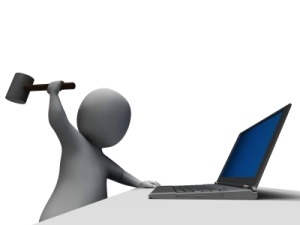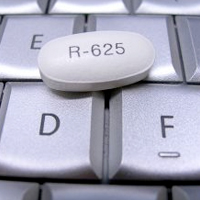 Alexander Technique teachers agree…
Alexander Technique teachers agree…
Alexander Technique teachers agree that taking frequent breaks from the computer is a good idea, but it will help only minimally if it isn’t an Alexander Technique computer break.
People unfamiliar with an Alexander Technique computer break may take their hands off the computer keyboard, shake them, roll their head around, stretch, only to begin again where they left off. To get out of their computer slump they sit up as straight as possible. When that gets too tiring, which may take a few seconds or a few minutes, they’ll go back to their habitual collapse. On and on, slumping, sitting up straight, then slumping again. And slumping wins.
An Alexander Technique computer break offers another possibility. The Alexander Technique computer break starts with the awareness that we are needlessly tensing our neck, and poking it forward towards the screen. The words and images on the screen draw our eyes (and therefore our head) closer. As our neck pokes forward we are compressing our spine as we tense our neck. This constant overuse of our neck muscles eventually causes neck pain and shoulder pain. Habitually shortening one’s neck means that the entire spine is shortening, often resulting in lower back pain as well.
Alexander Technique computer break
Let’s take an Alexander Technique computer break right now. Start by letting go of the tension in your neck. How? The same way as letting go of any other muscle; by using your thinking to release muscular tightening. We do it every time we unclench our fist or release our habitually tightened jaw. Becoming aware of and letting go of your neck muscles may take a little practice, but like anything else it gets easier with time, and eventually a new postural habit will be formed. Now that you’ve released tension in your neck, let your head rotate forward by lowering your nose and let the crown of your head move up, taking your entire spine along with it.
From top to bottom
The Alexander Technique computer break starts at the top with your thinking, your neck/head relationship, and working your way to your bottom. Let the sit bones, the “U” shaped bones at the bottom of your pelvis, release down in the chair. Now you’ve achieved a healthy opposition as your head moves up and your bottom moves down. Good posture, but not military posture, becomes comfortable.
As you put your hands back on the keyboard, think of letting your fingertips guide the movement, using as little tension as possible in your shoulders and biceps. Let your entire ribcage and torso contract and expand as you breath fully; top, bottom, back, and sides.
An Alexander Technique computer break can take less than seven seconds, so take as many as you want!
Mark Josefsberg-Alexander Technique NYC
(917) 709-4648
Image Courtesy od Freedigitalphotos.net “Computer break” by Stuart Mills











Love the idea of many 7-second AT computer breaks!
Yes Imogen! It can even be quite a bit less, when you don’t have the time!